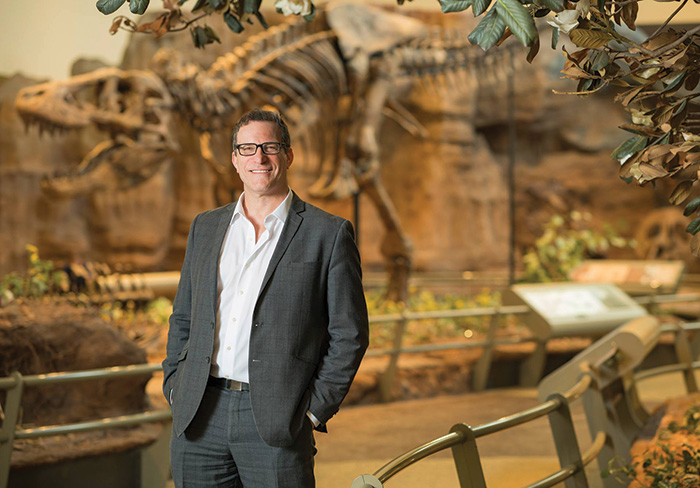
Eric Dorfman Photo: Joshua Franzos
The world is changing rapidly. There seems to be concerning news everywhere: mass poverty in the developing world, an increasingly divisive political climate here at home, and a multitude of concerns about the global environment. Yet, amid these sobering subjects, there is plenty of reason for hope. New marine reserves are helping the recovery of many fish and marine mammals. The tide of public opinion is turning on the production of single-use plastics. New techniques in genetics are being developed to bring many species back from the brink of extinction, and social media is, at its best, being used as an immensely powerful tool to effect positive change.
In 1952, Rachel Carson said, “The more clearly we can focus our attention on the wonders and realities of the universe about us the less taste we shall have for the destruction of our race. Wonder and humility are wholesome emotions, and they do not exist side by side with a lust for destruction.” Winning hearts and minds is fundamental to making a difference at a societal level.
Museums are uniquely placed to provide experiences that do just that. Whether focused on art, history, culture, or nature, they provide a context for objects that stir the emotions and, we hope, create life experiences that make a lasting impact on people and society.
At Carnegie Museum of Natural History, we aim to give our community multiple opportunities to make meaningful ties to wildlife and participate in conservation initiatives. Our latest exhibition, Reptiles: LIVE!, is a chance to come face-to-face with lizards, turtles, snakes, and crocodilians from around the world in 19 living dioramas. Aside from providing an opportunity to see the animals close up, we’ve woven in hands-on educational experiences about their biology and conservation.
“Whether focused on art, history, culture, or nature, [museums] provide a context for objects that stir the emotions and, we hope, create life experiences that make a lasting impact on people and society.”
The timing of this exhibition coincides with the arrival of one of our newest scientists, Jennifer Sheridan, assistant curator of amphibians and reptiles. Jennifer is a tropical conservation ecologist whose research centers on understanding and quantifying threats to biodiversity in order to better focus conservation efforts and mitigate change. The majority of her research has been conducted in Southeast Asia, but Jennifer also examines impacts of climate change and land use change on amphibians in Pennsylvania by utilizing the museum’s collections and conducting fieldwork at Powdermill Nature Reserve.
The important studies she and other science staff conduct are part of a museum-wide context that includes our exhibitions on popular and topical subjects as well as invaluable opportunities for inquiry-based educational engagement. Together, these make up our voice as an institution, a powerful voice that continues to speak up about and on behalf of the world around us.
Eric Dorfman
Daniel G. and Carole L. Kamin Director,
Carnegie Museum of Natural History
Receive more stories in your email
Sign upTags:
Science & Nature